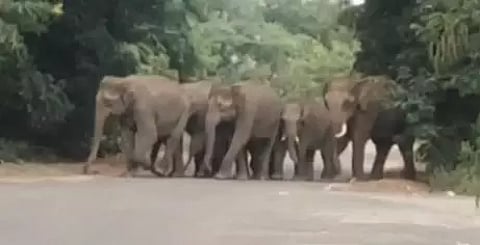

COIMBATORE: Though captive elephants get their food on a platter, their counterparts in the wild seem to be struggling for fodder as the rapid proliferation of invasive plants has led to a drastic depletion of their availability in the forest area.
Dominant invasive plants like ‘prosopis juliflora’ and ‘lantana camara’ have occupied major areas inside the forest leading to an extreme drop in fodder availability for herbivores and particularly larger animals like elephants.
Depleting fodder resources inside the forest area is also increasing human-animal conflict.
“An adult elephant requires up to 250 kg of fodder per day. When there is a lack of fodder availability in the forest, their search gets vigorous and if they come across farm crops, they get naturally habituated to raiding because of the easy availability of large quantities of food in a small patch of area. The problem starts here as elephants, which are naturally calm animals, get stressed and infuriated if they are driven out repeatedly resulting in negative interactions with human beings,” said K Kalidasan, president of Osai, an environmental NGO involved in wildlife protection.
Even if there is growth of invasive plants in smaller patches, then it needs to be cleared from spreading further and help in the regeneration of natural plants.
“Large areas in the ecologically hot spots like Moyar, which was once a beautiful grassland and grazing land for herbivores, has now been occupied by this invasive species. Though funds are allocated to weed them out, the reality is that it requires at least several years of continuous and scientific approach,” he added.
Even the forest department’s ambitious scheme to grow fodder inside the forest area to fulfill the requirements of wild elephants didn’t succeed to the expected levels.
Ideally, grass grows anywhere even for slight rains, while the need of the hour is the availability of open forests to facilitate its growth.
“The presence of just thick forest cover alone does not augur well for herbivores. There should also be a greater understanding in knowing where to grow trees and where they shouldn’t be grown,” say conservationists.
Environmental activists also suggested that a joint study by the forest, agriculture department, scientists, and other stakeholders should be undertaken on the status of the ficus tree, which is a preferred tree for wild elephants, and initiate efforts to increase their tree cover in the forest.